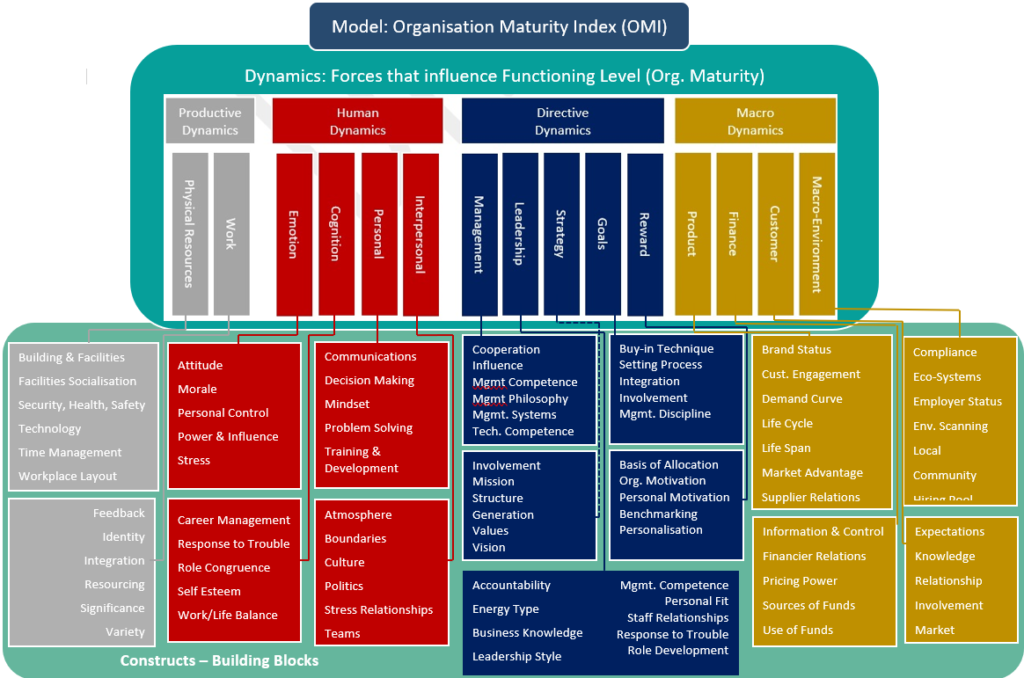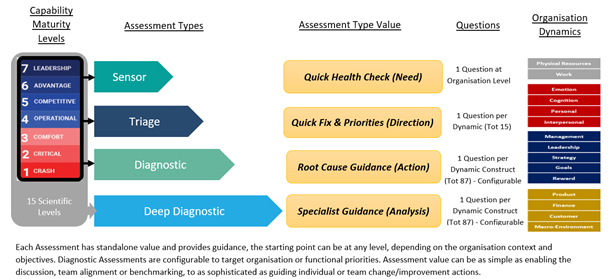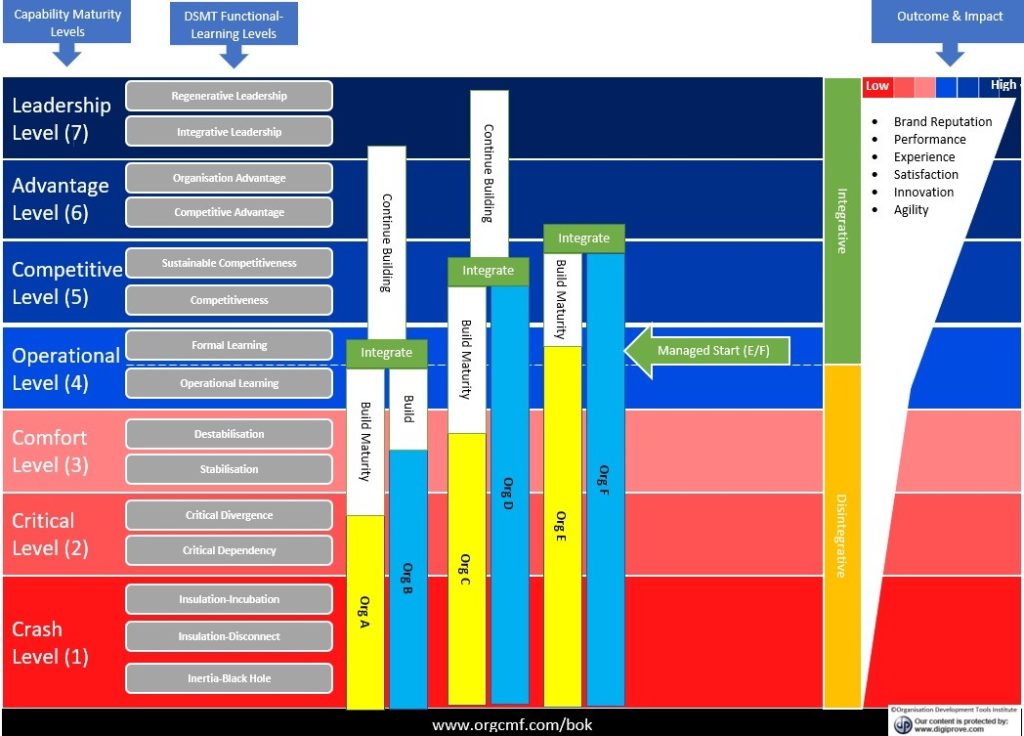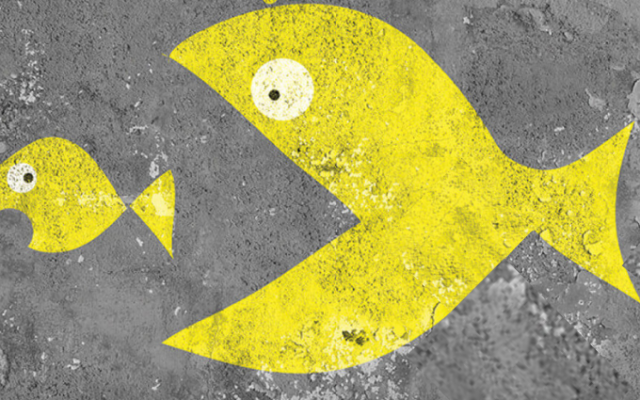Integration is the biggest challenge that consistently arises in reputable studies relating to Merger & Acquisition (M&A) transactions, and it is a significant contributor to failures of transactions to deliver expected benefits.
Planning and execution of the integration is often the afterthought once the transaction decision has been made. It’s not easy to align and integrate People, Process, Technologies, Systems, Culture etc.
Issues arise when the capability maturity for one or more of each organisation’s dynamics are not at the same level. The same can be said for restructuring even within one organisation.

We also now know that even if both organisations have dynamics that are at the same level, if they are both in the lower half of a scientific capability maturity scale (Disintegrative) the integration will present significant challenges.
So if you are selling or buying, both parties can increase the long term success potential of the transaction by assessing the Capability Maturities for all key dynamics and allowing for building the maturities, and adding any missing capabilities to an integrative level and aligned at the highest integrative level possible using a model such as the Organisation Capability Maturity Framework or other equivalent scientific maturity model.

Initial assessment and action guidance should start pre, or during due diligence using on-line maturity assessment tools available on www.orgcmf.com. But its never too late to adopt a Capability Maturity Framework as a significant aid to overcoming M&A integration challenges.
Creating the conditions for successful M&A Integration

Article by channel:
Everything you need to know about Digital Transformation
The best articles, news and events direct to your inbox
Read more articles tagged: Featured, Organisational Design







